Making Sushi with Expert Erwin Angeles of Kihon, Naples
(Gerry Furth-Sides) Erwin Angeles relaxed with the other guests and made small talk about the enormously long buffet filled with holiday dishes at Cary Huynh’s Asian New Year gathering in the Pasadena foothills. Dressed in a crew neck sweater and slacks, he could have been a college professor. But after his sushi demo, we could not imagine this owner-chef of Kihon sushi restaurant in Naples, California in the Long Beach area in anything but a chef coat, wielding a very sharp sushi knife.
Erwin has as low-key, dry a sense a humor as his fine sake is the opposite. He told us right at the start that “Sushi means rice with vinegar.” When asked about various types of wrapped fish that is billed as sushi, he had one answer; “ If it doesn’t have rice or vinegar, it’s not sushi.” Kind of like the popular trend of making Hummus (which translators into chickpea) without chickpeas or “rice” out of cauliflower.
He learned from the best, his mentor, CEO/Owner of Katsu-ya Group Inc. As one of only a small select group of Master sushi chefs in Los Angeles, Chef Katsuya Uechi brings culinary artistry and restaurant operations to the world. Katsuya Uechi was born and raised in Okinawa, Japan.
The concept of sushi (fish wrapped in rice and seaweed) started out as a method to keep fish from spoiling quickly. At first, salted fish was wrapped in fermented rice. The rice “wrapper” was discarded before the rice was eaten. Sushi was developed in Southeast Asia and southern China, before being introduced to Japan. Talk about successful packaging and marketing since Japan is now most closely associated with this delicacy. Eventually techniques to eat the rice by seasoning it took over from using rice vinegar to ferment it.
Erwin made another point clear, a behind-the-scenes technique which chefs would know. The essence of the rice is its center. So the rice must be rinsed enough times to take off the outer layers. Carefully, carefully, to not break it. Next the rice is soaked and drained. It is then cooked in a rice cooker, and cooled down so it will not bend or break when handled.
Erwin had already heated sugar and salt to add to the seasoned rice vinegar. This is done with much attention to detail so that each individual grain coated.
We were in glorious, warm, enviable Los Angeles in January in bright sun. So what would be more appropriate than a California Roll – which are not popular internationally as well as in Japan. It is filled with very coastal state staples: surimi fish known as imitation crab, avocado and cucumber spicy tuna roll and cucumber roll. Leave it to contemporary chefs to play with this dish and use a nori wrapping or turn it “inside out” with fluffy white rice showing
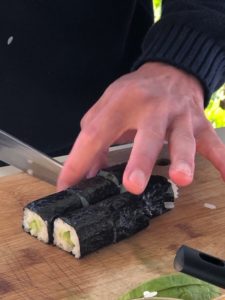 Erwin made another staple which has has all the ingredients to make up umami:: Spicy tuna roll (yellowtail tuna, smelt roe, green onion and spicy mayo flavored with chili paste, sugar, mirin (sweet cooking wine) and vinegar). Erwin’s twist is adding chili sesame oil.
Erwin made another staple which has has all the ingredients to make up umami:: Spicy tuna roll (yellowtail tuna, smelt roe, green onion and spicy mayo flavored with chili paste, sugar, mirin (sweet cooking wine) and vinegar). Erwin’s twist is adding chili sesame oil.
Erwin’s principles are sound and he follows them at his restaurant, Kohon: When eating sushi, think of the fish and the rice. Can you taste the quality of the fish, the freshness? Is the fish coming from the right region of the world during the right time of the year? Is it prepared and filleted at proper time before serving? The rice must also receive the proper amount of attention to detail. Is the density of the rice perfect; or does it fall apart when holding it with chopsticks? Does rice have the right amount of salt, sugar, and vinegar?
It takes years of dedication, thought, and practice to master these fundamentals.
“When a sushi restaurant cannot meet these standards, they will resort to covering up the true essence of the sushi with multitudes of sauces, smashing together various fishes and ingredients, hoping to distract the customer from its true taste and lack of attention to detail.
“We believe in the fundamentals ‘kihon’ of good sushi – use high quality ingredients choreographed with beautifully prepared fish and rice. Never hide the true essence of sushi with too much sauce. Most of all, pay attention to the core of beautiful sushi – the fish and the rice.

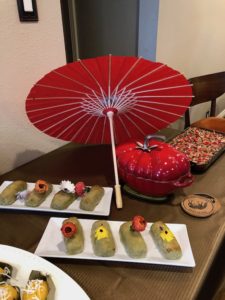
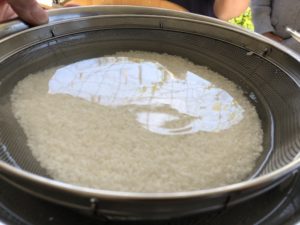
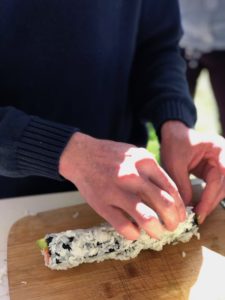
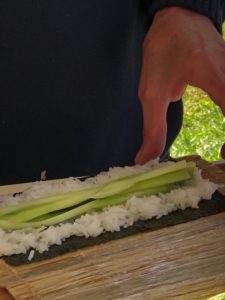
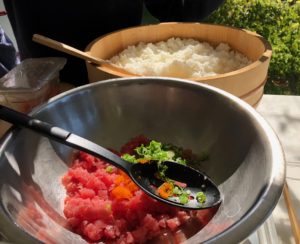
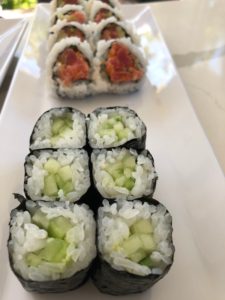
 Gerry Furth-Sides
Gerry Furth-Sides  Barbara Hansen
Barbara Hansen  Chef-owner Alain Cohen
Chef-owner Alain Cohen  Roberta Deen
Roberta Deen  Jose Martinez
Jose Martinez  Nivedita Basu
Nivedita Basu